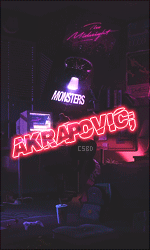Leaderboard
The search index is currently processing. Leaderboard results may not be complete.
Popular Content
Showing content with the highest reputation on 18/09/19 in all areas
-
4 points
-
Do you want ZP 6.0 instead of 6.2 for ZMOLDSCHOOL?! For sure we want, but we want to hear it from you too!3 points
-
Do you want ZP 6.0 instead of 6.2 for ZMOLDSCHOOL?! For sure we want, but we want to hear it from you too!3 points
-
2 points
-
> Opponent's nickname : @russ > Theme (must be an image): https://ibb.co/RzP4cw8 > Work Type: Avatar > Size & Texts: 150x250 & text Battle , Csblackdevil > How many votes?: 8 > Work time: 12h1 point
-
hello there ! i think u r wrong,u must put the model,and tell us what u need(problem) follow this model,edit ur post ! Your Nickname: Your Problem: Screenshot:1 point
-
How to be a Great Dad – 12 Awesome Tips: - Tip 1: Give them hugs. Dads shouldn’t be afraid to show affection. Kids need physical contact, and not just from their moms. Snuggle with them, hug them, love them. @russ I want you to know that I am reading and watching tutorials about how to be a great dad, I want the best for you, I want you to be proud of your dad and I want to be proud of you. We will be always together, my little baby.1 point
-
You should to do what everyone loves evenand, if u don't like it you should do it ?1 point
-
1 point
-
1 point
-
1 point
-
1 point
-
anyone who is a fan of 4X games set in space will naturally be at home with Insterstellar Space: Genesis by Praxis Games. The usual setup is very clear: start with one planet with a duo of frigates and work your way up from there against distinct rivals. It's quite obvious from the beginning that Interstellar Space: Genesis wishes to bring the player back to the look and feel of the venerable Master of Orion 2. One look at their rectangular galaxy map throws one back to the days when 4X games did not bother with the hyperrealism of depicting a spiral galaxy (something which even the sequels of Master of Orion 2 did). Instead, just as with Star Trek: Birth of the Federation, the “galaxy” is a rectangular grid of finite stars. If the obvious draw is to bring back fans to the satisfaction of the old classics or to introduce a new generation of gamers to what was successful before, ISG is meticulous in attempting to live up to that standard. The devotion to the Master of Orion format, for example, easily makes ISG a seamless “unofficial sequel” to Master of Orion 2. Anyone who has played Master of Orion 2 can find that their tried and true strategies will still be applicable. The obvious path of acquiring planets to po[CENSORED]te and then specialize in production later is applicable now as it was years ago. Resisting the temptation to just shovel all of your planet focus into production instead of building pops requires about as much discipline as investing for a retirement fund, but it is definitely standard for any fan of the genre. For the old player, it is a relief to apply one's deep knowledge of how to build space empires to a new setting while for a new player, it can successfully present an “optimization puzzle” since it can be so easy to be outpaced by other empires if one does not properly optimize their initial moves. Master of Orion, however, is not the only franchise that ISG seems to draw its creative juices from. A Civilization-style “Space Culture” system is present (similar, also, to the more contemporary “traditions” presented in Stellaris) that, while welcome, is somewhat limited in flavour. Unlike Civ's rather titanic ideological dichotomies—such as choosing between such fundamental choices as liberty and hierarchy—there is not much flavour or drama when choosing between Space Culture paths. They all seem to subscribe to the same template of technological progress. Some choices don't even make sense as pirate tendencies for the more enlightened or Borg-like races presents a strange cognitive dissonance. Similar to every other 4X game, factions are available to play with varying ideologies and bonuses. Aside from the “usual” Human faction, there are also hive minds, enlightened nomads, “space elves”, etc. The six presented all run the usual gamut of Space civilizations. While nothing particularly stands out about these factions, none of them particularly disappoint either. After all, one does not necessarily complain that an ice cream stand contains vanilla, chocolate, and strawberry. Thankfully, there is an option to edit the factions or customize one's own. In fact, even the difficulty of a particular faction can be tweaked so that you can create “boss” races to deal with. Otherwise, the options are relatively limited to differing bonuses and starting options, but at least allows a player to aim for that optimal sweet spot. Thankfully, the artwork for each faction and their quaint semi-animation (similar to Stellaris portraits) are worth commending as a triumph for an indie title. In fact, the overall artwork is actually rather impressive for an indie game that chose not to go down the path of cartoonish abstraction. The opening sequence, for example, while humble and slightly awkward in its English narration, still executes a sense of mystery that is the right pairing for a space exploration game. The 3D graphics such as in the colony view are rather sleek and finely detailed, but actually suffer from a lack of available camera angles. This is unfortunate since even the simplistic models of Imperium Galactica II could be explored by the player adjusting the camera. Even if we want to remain with the old style of 4X games, it is unfortunate that ISG teases us with decent graphics and does not allow us to look around. Still, not everything is thoroughly orthodox. The remote exploration system which allows for exploration without a survey ship based on technological range and which can also be repeated in order to further delve into a particular sector is a truly inspired mechanic. This system even beats out Stellaris's exploration suite which is a once-surveyed-done mechanic. In contrast, while not containing the breadth of larger production titles, ISG's system demonstrates the ability to address depth of exploration and not just exploring “wide”. The obvious sandbox nature of 4X games helps to make sure that ISG is a replayable offering. The various customizations also help to allow the game to be enjoyable even after the first few forays. New players in particular will be obviously spending many playthroughs adjusting their optimization curves to beat the various levels of difficulty. Thankfully, replayability is also aided by certain options such as random tech tree settings in the beginning. The overarching story is relatively light hinting at some overarching origin or threat which is satisfactory enough even if the story won't be completed until the expansions come out (I'll avoid spoilers). Still, the focus is definitely in reproducing a particular feel of game rather than offering an entirely engaging storyline. Most of the story is left up to the player to create in usual 4X sandbox style. The flavour events that can pop up range from mildly interesting to downright amusing. They add a certain level of immersion in an otherwise number-heavy game. Still, the technical expertise of the game overshadows the rather shallow side stories. The window dressing, while a noble effort, ultimately yields to the game experience. The game is almost an exercise in impressionism: and this time, the subject is 4X mechanics. space combat has its entertaining aspects. The ability to customize one's ships and even the differences between the various races offer a wide spectrum of combat experiences which does not leave one bored. The turn-based system which is quite a throwback might be controversial for new players but completes the homage to the old games. Tactical planning is relatively enjoyable all things considered. While perhaps controversial, space combat actually deploys fewer ships than one might expect from 4X titles (how often, for example, did we amass Romulan Destroyer-IIs in Birth of the Federation), but I can see the appeal. In some ways, it's similar to the relatively small number of heavily-armed ships in modern navies. This “smaller scale” is also practiced on Empire Management which has been “simplified” compared to its Master of Orion 2 spiritual father. Fewer building slots and greater focus on the type of buildings built in a colony might be a welcome relief for so many players who want to avoid spending half the time in the late game just clicking the same upgrades over and over again. Ground combat is very reminiscent of Imperium Galactica II especially with hovertanks. The usual siege-assault mechanic is easy enough to understand even for new players. However, some interesting choices such as “raiding” in order to basically do covert operations on a planet adds some diversity which is not present in even larger titles. With so many techs either weak or strong against each other, these kinds of operations as well as espionage in general has been positioned to be more relevant than in previous 4X titles of the old days. This is actually a welcome development as espionage actions were often just minor bonuses or advantages in other titles. Here, they can actually make or break a particular engagement. It truly puts to light what Sun Tzu said about knowing one's self and knowing one's enemy as the key to victory. Perhaps the most interesting innovation they've created is the enhanced leader system which infuses a great sense of personality to the game. Leaders have their own agendas and traits which finally creates a realistic “ecosystem” of persons in any given Empire. You an even choose to satisfy or ignore these ambitions of each leader with varying effects and risks. I cannot stress enough how refreshing this mechanic is to engage the player as truly Emperor of this group of free individuals. Interstellar Space: Genesis Review By Edward Mass 05 Aug 2019 0 Interstellar Space: Genesis Review Released 25 Jul 2019 Developer: Praxis Games Genre: Turn-Based Strategy Available from: Steam Reviewed on: PC Anyone who is a fan of 4X games set in space will naturally be at home with Insterstellar Space: Genesis by Praxis Games. The usual setup is very clear: start with one planet with a duo of frigates and work your way up from there against distinct rivals. It's quite obvious from the beginning that Interstellar Space: Genesis wishes to bring the player back to the look and feel of the venerable Master of Orion 2. One look at their rectangular galaxy map throws one back to the days when 4X games did not bother with the hyperrealism of depicting a spiral galaxy (something which even the sequels of Master of Orion 2 did). Instead, just as with Star Trek: Birth of the Federation, the “galaxy” is a rectangular grid of finite stars. If the obvious draw is to bring back fans to the satisfaction of the old classics or to introduce a new generation of gamers to what was successful before, ISG is meticulous in attempting to live up to that standard. The devotion to the Master of Orion format, for example, easily makes ISG a seamless “unofficial sequel” to Master of Orion 2. Anyone who has played Master of Orion 2 can find that their tried and true strategies will still be applicable. The obvious path of acquiring planets to po[CENSORED]te and then specialize in production later is applicable now as it was years ago. Resisting the temptation to just shovel all of your planet focus into production instead of building pops requires about as much discipline as investing for a retirement fund, but it is definitely standard for any fan of the genre. For the old player, it is a relief to apply one's deep knowledge of how to build space empires to a new setting while for a new player, it can successfully present an “optimization puzzle” since it can be so easy to be outpaced by other empires if one does not properly optimize their initial moves. Master of Orion, however, is not the only franchise that ISG seems to draw its creative juices from. A Civilization-style “Space Culture” system is present (similar, also, to the more contemporary “traditions” presented in Stellaris) that, while welcome, is somewhat limited in flavour. Unlike Civ's rather titanic ideological dichotomies—such as choosing between such fundamental choices as liberty and hierarchy—there is not much flavour or drama when choosing between Space Culture paths. They all seem to subscribe to the same template of technological progress. Some choices don't even make sense as pirate tendencies for the more enlightened or Borg-like races presents a strange cognitive dissonance. Similar to every other 4X game, factions are available to play with varying ideologies and bonuses. Aside from the “usual” Human faction, there are also hive minds, enlightened nomads, “space elves”, etc. The six presented all run the usual gamut of Space civilizations. While nothing particularly stands out about these factions, none of them particularly disappoint either. After all, one does not necessarily complain that an ice cream stand contains vanilla, chocolate, and strawberry. Thankfully, there is an option to edit the factions or customize one's own. In fact, even the difficulty of a particular faction can be tweaked so that you can create “boss” races to deal with. Otherwise, the options are relatively limited to differing bonuses and starting options, but at least allows a player to aim for that optimal sweet spot. Thankfully, the artwork for each faction and their quaint semi-animation (similar to Stellaris portraits) are worth commending as a triumph for an indie title. In fact, the overall artwork is actually rather impressive for an indie game that chose not to go down the path of cartoonish abstraction. The opening sequence, for example, while humble and slightly awkward in its English narration, still executes a sense of mystery that is the right pairing for a space exploration game. The 3D graphics such as in the colony view are rather sleek and finely detailed, but actually suffer from a lack of available camera angles. This is unfortunate since even the simplistic models of Imperium Galactica II could be explored by the player adjusting the camera. Even if we want to remain with the old style of 4X games, it is unfortunate that ISG teases us with decent graphics and does not allow us to look around. Still, not everything is thoroughly orthodox. The remote exploration system which allows for exploration without a survey ship based on technological range and which can also be repeated in order to further delve into a particular sector is a truly inspired mechanic. This system even beats out Stellaris's exploration suite which is a once-surveyed-done mechanic. In contrast, while not containing the breadth of larger production titles, ISG's system demonstrates the ability to address depth of exploration and not just exploring “wide”. The obvious sandbox nature of 4X games helps to make sure that ISG is a replayable offering. The various customizations also help to allow the game to be enjoyable even after the first few forays. New players in particular will be obviously spending many playthroughs adjusting their optimization curves to beat the various levels of difficulty. Thankfully, replayability is also aided by certain options such as random tech tree settings in the beginning. The overarching story is relatively light hinting at some overarching origin or threat which is satisfactory enough even if the story won't be completed until the expansions come out (I'll avoid spoilers). Still, the focus is definitely in reproducing a particular feel of game rather than offering an entirely engaging storyline. Most of the story is left up to the player to create in usual 4X sandbox style. The flavour events that can pop up range from mildly interesting to downright amusing. They add a certain level of immersion in an otherwise number-heavy game. Still, the technical expertise of the game overshadows the rather shallow side stories. The window dressing, while a noble effort, ultimately yields to the game experience. The game is almost an exercise in impressionism: and this time, the subject is 4X mechanics. Space combat has its entertaining aspects. The ability to customize one's ships and even the differences between the various races offer a wide spectrum of combat experiences which does not leave one bored. The turn-based system which is quite a throwback might be controversial for new players but completes the homage to the old games. Tactical planning is relatively enjoyable all things considered. While perhaps controversial, space combat actually deploys fewer ships than one might expect from 4X titles (how often, for example, did we amass Romulan Destroyer-IIs in Birth of the Federation), but I can see the appeal. In some ways, it's similar to the relatively small number of heavily-armed ships in modern navies. This “smaller scale” is also practiced on Empire Management which has been “simplified” compared to its Master of Orion 2 spiritual father. Fewer building slots and greater focus on the type of buildings built in a colony might be a welcome relief for so many players who want to avoid spending half the time in the late game just clicking the same upgrades over and over again. Ground combat is very reminiscent of Imperium Galactica II especially with hovertanks. The usual siege-assault mechanic is easy enough to understand even for new players. However, some interesting choices such as “raiding” in order to basically do covert operations on a planet adds some diversity which is not present in even larger titles. With so many techs either weak or strong against each other, these kinds of operations as well as espionage in general has been positioned to be more relevant than in previous 4X titles of the old days. This is actually a welcome development as espionage actions were often just minor bonuses or advantages in other titles. Here, they can actually make or break a particular engagement. It truly puts to light what Sun Tzu said about knowing one's self and knowing one's enemy as the key to victory. Perhaps the most interesting innovation they've created is the enhanced leader system which infuses a great sense of personality to the game. Leaders have their own agendas and traits which finally creates a realistic “ecosystem” of persons in any given Empire. You an even choose to satisfy or ignore these ambitions of each leader with varying effects and risks. I cannot stress enough how refreshing this mechanic is to engage the player as truly Emperor of this group of free individuals. With all that being said, while straddling the uncanny valley between nostalgic throwback and space grand strategy, Interstellar Space: Genesis still has some charm to it. For an Indie game, it successfully fills a niche that has a particular demand and does it with enough self-awareness to avoid being a stale experience or a cynical moneygrab. Considering the scale, and the fact that it focuses on “4X Impressionism”, despite not being at the heights of something as heavy handed as Stellaris, it is a proof of concept that an old genre can be resurrected. Like Richard Hammond's 1968 Ford Mustang GT 390, the machinery and old style hum perfectly, but this particular roadster does add enough modern amenities to make it stand out. While they should have prioritized some over others, its conservative adherence to the old ways is its saving grace.1 point
-
1 point
-
New Requested Creations has been made! Preview: V1(GIF Version): V2(PNG Version): Opinions are acceptable!!!1 point
-
1 point
-
1 point
-
1 point
-
1 point
-
1 point
-
Congratulations ❤️ it's good to see an old staff back ❤️1 point
-
Hello Mr. @forestMan Please respect the model, where is your hours link & rules pw. Here you have to look for your hours link And read the rules carefully Make another request after a week, do not be lazy Topic/Closed!!1 point
-
1 point
-
1 point
-
1 point
-
1 point
-
1 point
-
1 point
-
Good morning my friends and all of @CSBD who have a very happy day and full of blessings ?1 point
-
Esperando Respuesta sobre mi Solicitud para adm V: tengo miedo xD1 point
-
Hello to all my friends and acquaintances who have a happy afternoon ? @Dyl3R @Sr-MaRiO @ElAnonimoツ @CSBD @- Draco - @CSBD @OyaYansa @-Dark @Roselina ✾ @Pressure CSBD1 point
-
1 point
-
1 point
-
Hello Friend For this you must have your PC optimized to obtain a good performance and the Game works 100% depending on the PC you have here I will leave you some commands that can help you increase FPS, and you must also delete junk files that you have on your PC Facing problem due to low FPS and high latency (ping)? Try out these simple steps and improve your fps and ping. Reasons for low FPS: Low PC Configuration Internet problems Background apps using too much RAM Resolution Problem Low priority of hl.exe Now we'll solve all these problems and you will see the difference in your FPS: 1. LOW PC CONFIGURATION: The most common cause of low FPS is outdated computer. Following are the requirements for playing cs 1.6 @ 100 FPS "800 mhz processor, 512mb ram, 64mb + video card, Windows XP / 7/8 or linux UBUNTU" So just upgrade your PC or laptop to these configurations and enjoy counter strike lag free. 2.INTERNET PROBLEMS: -BACKGROUND APPS: Sometimes the internet speed is used up by background applications for 'Downloading' like torrents, IDM etc. So always remember to stop the downloading before starting your counter strike. To keep track of your internet speed being used by your system check the following: Go to Task Manager by pressing ALT + CTRL + DELETE or right click on taskbar and select Task Manager. Select the NETWORKING Tab. Here you can see the amount of network utilized by your system. cs 1.6 lag fix ALWAYS USE LAN CONNECTION: WiFi connections are not recommended for a lag free gaming experience, so a LAN connection is always better than a WiFi as WiFi signals may get interrupt due to some 'noise' in environment. BACKGROUND APPS USING TOO MUCH RAM Always close all the heavy applications (applications bigger in size) before starting your CS. I suggest even close your windows explorer (explorer.exe) for a complete lag free environment. To stop your windows explorer: Open task manager as told in above guide. Goto PROCESSES Tab and look for 'explorer.exe', select it and click 'END PROCESS' cs 1.6 lag fix Similarly look for other applications that are using too much of CPU and stop them. Remember not to stop the processes that are windows default except explorer and taskmanager. To start explorer later: Open your task manager using ALT + CTRL + DELETE. Goto File -> new task. A run window will open, in that type 'explorer.exe' and windows explorer will start again. RESOLUTION PROBLEM Always try to play on 800 x 600 or 1024 x 768. These are standard resolutions or you can increase them according to the size of your screen. If you have resolution problem goto RESOLUTION PROBLEM IN CS 1.6 LOW PRIORITY OF hl.exe Increase the priority of your counter strike 1.6 application (hl.exe) to give more emphasis on hl.exe by CPU. Open your counter strike 1.6 and minimize it. Then open TaskManager using the above guide. Locate hl.exe in PROCESSES Tab and right click on it. Select 'Set Priority' and choose 'high'. Similarly choose high priority for steam.exe. By using all the steps you can finally get your 100 FPS and do not forget to use: "fps_max 100" and "gl_vsync 0" AND SEE THE CHANGES. Here a video Guide1 point
-
1 point
-
My friend, please delete me because I want to talk to you1 point
-
bro Do my survey message because I want to talk to you1 point
-
1 point
-
?Looking 2 Co-owners with good experience on ultimatex ZP 6.21 point
-
1 point
-
1 point
-
Good morning friends, does anyone know if there are any tutorials on how to use an FTP?1 point
-
1 point
-
1 point
-
1 point
-
1 point
-
Command & Conquer Red Alert 2 is the sequel to the popular 1996 spin-off of Westwood's definitive real-time strategy game. The latest game in the successful series isn't a dramatic technological improvement over any of its predecessors, and it's hammy alternate-World War II setting borders on being tasteless. However, Red Alert 2 is a very polished game that combines tried-and-true play mechanics with enough new features, improvements, and enhancements to make it both an excellent sequel and a great real-time strategy game in its own right. Red Alert 2 retains many of the conventional mechanics established and reused in the various Command & Conquer real-time strategy games. As with its predecessors, Red Alert 2 encompasses most all of the elements that define the genre. You view the action from an isometric perspective typical of most other 2D real-time strategy games, and you play using most of the same exact controls from previous Command & Conquer episodes. The formula still works just fine - you can easily select and move your groups of units, which generally do a good job navigating the game's environments. Red Alert 2 features a campaign for both the Allies and the Soviets, in addition to a short optional tutorial. You need to harvest your resources from mineral patches by using special mining vehicles, as in all other Command & Conquer games. You'll want to play through both campaigns, but Red Alert 2's real lasting value is in its great multiplayer mode. The game offers several different multiplayer variations, in addition to options for disabling superweapons and more. In multiplayer (and also in a skirmish match vs. the computer), you actually choose a specific nationality rather than just the Allied or the Soviet faction, and this choice essentially just gives you access to a particular unit unique to that side. For instance, the Russians have a tesla tank that uses a powerful electric attack, while the British have a deadly sniper. It's very simple to find an opponent online - the fully integrated player-matching service in Red Alert 2 can actually pit you against a random opponent if you use the quick-match option. Otherwise, you can chat with other players looking to play, check to see if your friends are also playing online, compete in ladder matches for a better ranking, and more. The game even has a series of cooperative multiplayer missions, as well as the world domination tour mode in which players engage in a persistent territorial conflict. Multiplayer Red Alert 2 plays smoothly and seems stable over a fast Internet connection. Red Alert 2 offers lots of challenges and variety for real-time strategy players of all skill levels, and it'll be particularly fun for fans of previous Command & Conquer games. My opinion? Ohh, fantastic game! Actually i am playing daily with my friend @GoL1NNN'. Red Alert 2 Game Information Game Name: Command & Conquer: Red Alert 2 Genre: Real-time Strategy Developer(s): Westwood Pacific Publisher(s): EA Games Platform(s): Microsoft Windows Release date(s): October 23, 2000 PEGI Rating: 12+ Mode(s): Single-player, multiplayer Red Alert 2 System Requirements (PC) Single Player Requirements -Windows 95, 98, NT 6.0, 2000, or Millennium -Pentium II 266 or better -64 MB of RAM -2 MB of Video RAM -16 bit color -200 MB of additional hard drive space Multiplayer Requirements -56 Kbps Modem -TCP/IP Internet Connection or LAN w/ IPX -ISP for Internet Play Additional Multiplayer Requirements (for 3-8 players) -Pentium II 450 or better -128 MB of RAM Also for online games ( with friends you need to use TUNNGLE ). For other questions, leave a reply! All my respect, Adi ( alias Mr.Love )1 point















![[N]audy](https://csblackdevil.com/forums/uploads/monthly_2020_06/lCGU8Xg.thumb.png.45679e2de49e686878288cdf7b53f6f4.png)






